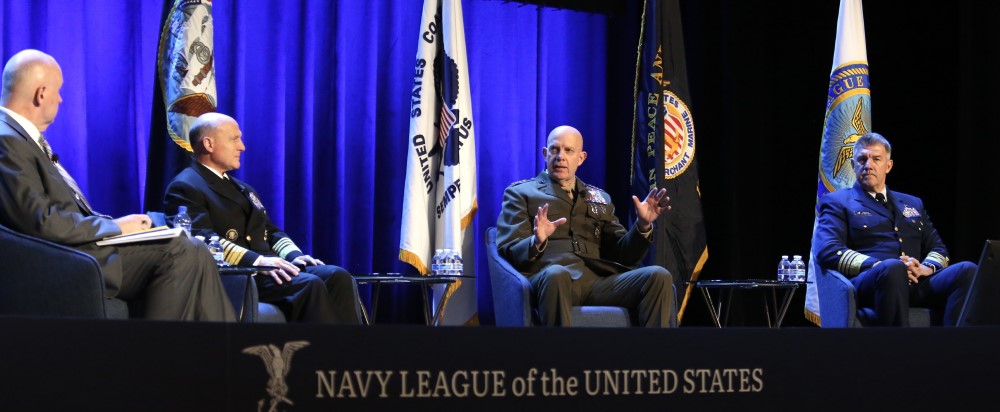Service Chiefs: ‘Keep Your Eye on China’

NATIONAL HARBOR, Md. — The top leaders of the Navy and Marine Corps sought to justify their force structure decisions, arguing April 4 that it was necessary to cut some current platforms and systems to be able to buy the capabilities they believe will be needed for a likely future fight against a new peer competitor.
“I think the three of us are saying, keep your eye on China,” said Chief of Naval Operations Adm. Michael Gilday, which was echoed by Marine Corps Commandant Gen. David Berger and Coast Guard Commandant Adm. Karl Schultz in the opening session of the Navy League’s 2022 Sea-Air-Space exposition.
All three of the maritime leaders highlighted their priorities in the newly released 2023 defense budget, which Berger noted was released within days of the new National Defense Strategy and the Nuclear Posture Review.
“It’s very clear to me this is a strategy-driven budget,” Berger said. “If we need to fight in the South China Sea, the force has to be relevant.”
“In order to understand how you resource the fleet, you have to think about how you plan to use the fleet, how you will fight the fleet,” Gilday said, adding that that was done “in the content of strategy.”
The new Navy budget proposes deeper cuts in the surface fleet than previous proposals, and the Marine Corps’ funding plan continues the reductions and changes in the Corps’ forces to make it lighter and more mobile to operate in a contested littoral environment.
Gilday said the Navy needs “a more ready force rather than a less ready larger force. If you look at the budget, we’re trying to buy back a ready force,” that has ammunition in its magazines with a priority on longer range weapons.
“I personally think we are on the right path.,” he said, while acknowledging that the budget “is not popular with many in the fleet and in this room.”
If you are going to match the change in the character of warfare, Berger said, “you have to divest some resources.”

Schultz noted the recent signing by all three of the maritime leaders of a new maritime security strategy, which continues the growing integration of his service with the Navy and Marine Corps in the efforts to counter a stronger and more aggressive China.
Schultz said the changing national security and global economic growth has put unprecedented demands on the Coast Guard.
He emphasized the Coast Guard’s uncommonly strong shipbuilding program, which includes finishing the National Security Cutter fleet, buying more of its Offshore Security Cutters and planning a new ice breaker.
Gilday said the long-term shipbuilding program would produce increased capabilities in the surface and undersea fleets with the new models of the Arleigh Burke destroyers and Virginia-class attack submarines, the future guided missile frigates and a wide variety of unmanned surface and subsurface systems.






